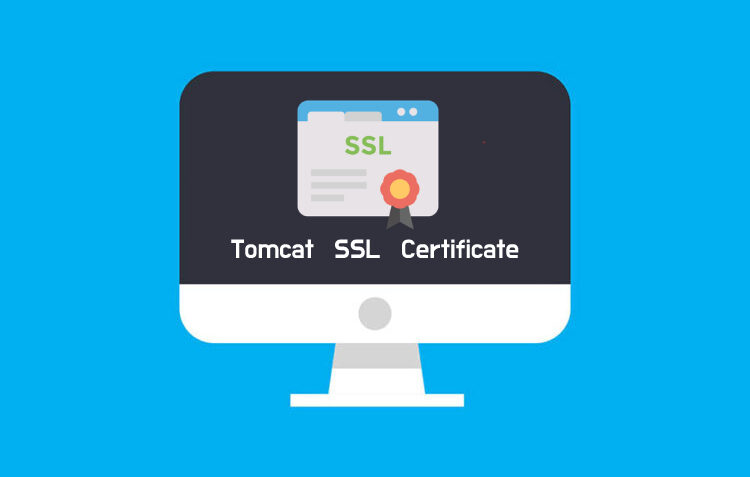SSL is a kind of technology that is used in form of certificates to provide authenticated and secure communication between the client’s server and the website’s server. These certificates come with unique primary and private keys. And when the secure connection is achieved between the servers the encrypted data follows from one side to another and then it is decrypted on the other side. This way the data is secured and is not attacked by the traducers on the way of the transmission.
Tomcat is also known as “Apache Tomcat”. It is an application of Java Software Server, Jakarta Language, and Websocket. It provides a secure domain for the Java Code to run online.
The client’s servers (Web browser) check the legitimacy of the SSL/ TLS certificates before connecting to the webserver, to prove its legitimacy in order to secure a distinguished platform for web browsers(clients) and also this enhances their site’s performance.
There is a process called SSL/TLS Handshaking (it is also used in WebSocket technology) that occurs when the client (web browser) attempts to establish a connection with the website server. Simply put, it is the round-trip communication between the web browser and the webserver. its main purpose is to create an encrypted connection between the client and the web browser.
Relationship between SSL Certificate and Tomcat
Tomcat stores the SSL Certificate in the ‘Keystore’, you could easily find it in your backend files. SSL Certificate and Tomcat both need each other to provide efficient working to the user. Tomcat requires the advantage of SSL when solely running as the discreet internet server. Basically, how it works is that the tomcat receives the decrypted requests that are sent after the SSL verification, it also reverts back the message’s reply which then goes through the process of encryption with the help of the primary server, and then they sent to be transmitted around the internet.
During this process tomcat is aware of all the transmitted messages between the internet server and the consumer are happening over a secure affiliation. However, it does not participate in the process of coding or decipherment.
Role of CA signed in Tomcat SSL Certificate
CA-signed certificates are the digital certificates are issued to the web servers by bound authorities known as CA (Certificate Authorities). They act as a Third-party for sanctioning the certificates in HTTPS to produce a secure platform for browsing. There are basically two types of certificates that are self-signed certificates and CA signed. Well, it only depends on what period of authentication and the kind of strength you need of the certificate, and accordingly you can choose the one. It’s always a better option to choose a CA-signed certificate.
How to install SSL Certificate in Tomcat?
The things that require to have in order to set up the SSL Certificate in the tomcat, is to primarily own the CA Signed Certificate, a CA bundled file, your certificate should contain information about the Private Key, in some cases like in the ‘Microsoft IIS’, it will take time to load your private key, but we don’t have to worry about that because the Server will Keep the track of that.
Follow the steps given below for the proper installation of the SSL Certificate in Tomcat.
Step 1: This step is the transformation step, here you need to metamorphose your Certificate Stockpilled data from ‘PEM’ to ‘PKCS#7’ format. You could do this by running the code provided: “openssl crl2pkcs7 -nocrl -certfile certificate.cer -out certificate.p7b -certfile CACert.cer.”
Step 2: for this step you need to visit your ‘Home Directory’ to access the Keystore. It is where you will have to install the SSL Certificate.
Step 3: for the installation process run the given code line: “keytool -import -trustcacerts -alias server -file your_file_name.p7b -keystore your_domain_name.jks”
In the above code, the line makes a few changes that are, replace ‘your_domain_name’ with your certain domain name and ‘your_file_name’ with PKCS#7.
Step 4: After the completion of the above steps, you will see the message: ‘Certificate Reply was installed in Keystore’
Step 5: Press Y, for the confirmation that you trust the certificate.
Step 6: This is the step where you will complete the configuration process of the ‘SSL connector’, in order to make the server available for authenticated connections.
Step 7: Again visit the ‘Home Directory’, access the configuration folder, and open the file named ‘.xml’ in some text editor software.
Step 8: Now, for the authentication process, find the location of the ‘connector’.
Step 9: Remove the modules from the connector, if necessary.
Step 10: Enter the required ‘Keystore Filename’ and ‘Password’.
Step 11: Now, save the updated .xml file.
Step 12: In order for this whole installation process to complete you need to restart the ‘Tomcat server’.
When all is done, you are good to go and make use of the Tomcat server, with the installed SSL certificate.


